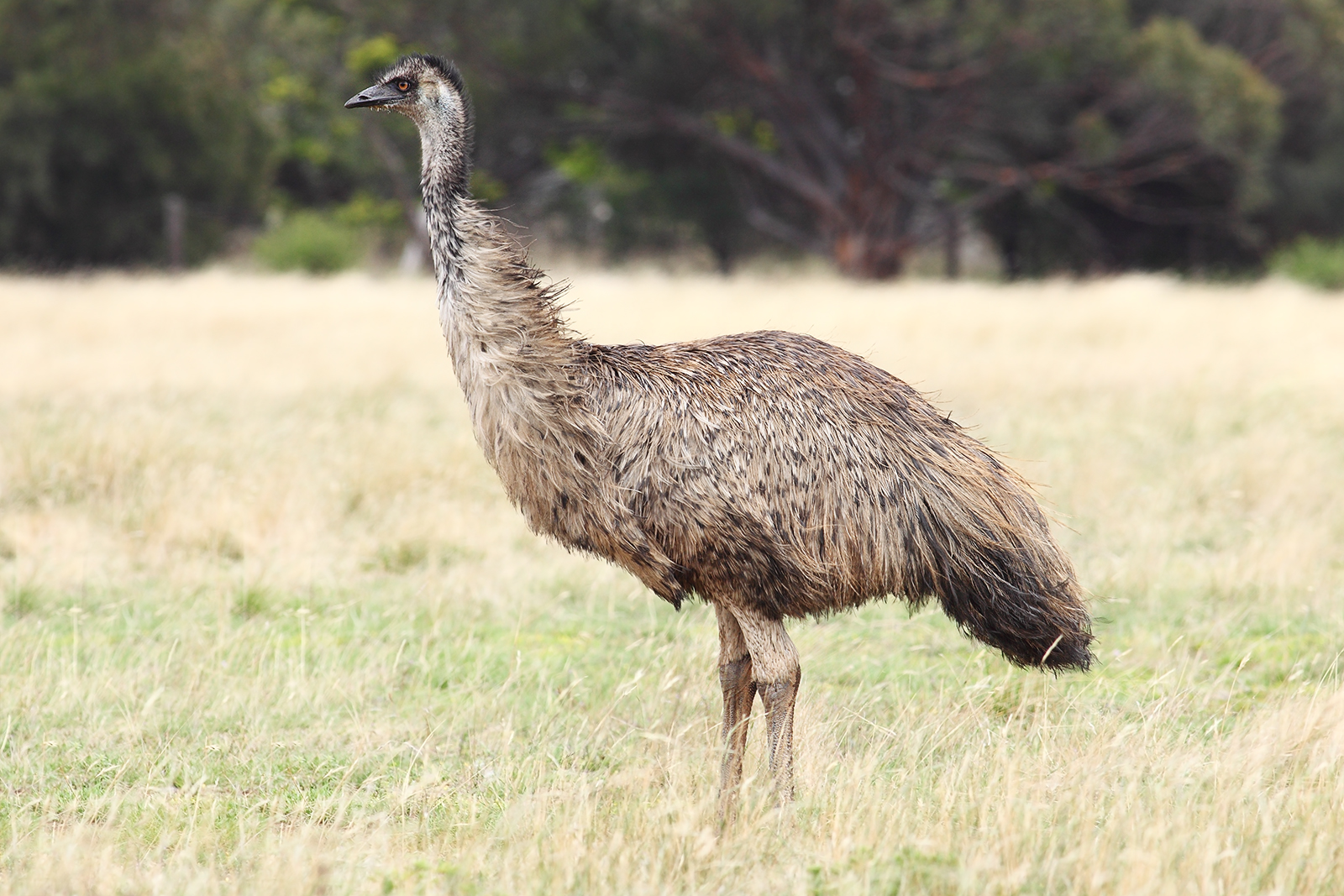| The Gargantuavis philoinos type specimen. What, you were expecting more? |
Now, flightless birds in the Mesozoic isn't anything new. Hesperornithes have been known for ages, Patagopteryx (a close relative of Gargantuavis) seems to be a small flightless bird from Argentina, and if you wanna get technical about it one could argue that pennaraptorans are all technically "flightless birds" in the sense that they're feathered things which we think descended from volant or semi-volant ancestors. Balaur was also shown recently to likely be a type of flightless bird close to the base of the avian family tree, showing that even long-tailed birds had a few enigmatic flightless forms. What makes Gargantuavis so interesting, however, is the fact that it seems to be the earliest occurrence of a typical ratite-like body plan characteristic of many later flightless birds which appeared throughout the Cenozoic and continue up to this day in the form of actual ratites.
How much do we know of Gargantuavis? Just a handful of bones for the most part, but just enough for us to get a general idea of what this animal looked like. What's known of the hip and legs shows us that Gargantuavis suggests that it was an extremely heavily built animal incapable of flight, like ratites of today. Unlike many living ratites which are adapted for speed, Gargantuavis had a very broad pelvic bone, possibly to accommodate a large gut, and the size of the femur suggests it was not a specialized runner. Matthew Martyniuk (2012) suggests that this might mean Gargantuavis was much more moa-like in ecology than ostrich-like, and may mean it was also a giant, robustly-built herbivorous browsing animal. A neck vertebrae described in 2012 which may belong to Gargantuavis suggests that it had a long neck and small head, again, like is typical in the largely herbivorous ratites. There's even a possibility that some eggshells originally classified as sauropod eggs from the region might belong to this gigantic bird.
Why has such an interesting animal been ignored by paleoartists? Balaur got a slew of paleoartwork done for it during both its first and second description, and Patagopteryx, an animal much smaller, simpler-looking, yet closely related to Gargantuavis, has a slew of artwork for it online. Don't think it has to do with its fragmentary nature either; Googling Amphicoelias or Sauroniops online should explain enough. The only other illustration outside of those that I've ever seen of Gargantuavis is in Martyniuk's 2012 book A Field Guide to Mesozoic Birds and other Winged Dinosaurs, in which he presents the best reconstruction I've yet seen of this animal. That leaves a total of three official reconstructions that I know about. (Let me know if you know of any more in the comments below.)
So, what does a dinosaur nerd like myself do when he's desperate to see more illustrations of what has to be one of the most interesting Mesozoic euornithines? Sharpen a pencil, pull out some sketch paper, and start drawing:
 |
| A trio of Gargantuavis and a juvenile Ampelosaurus wander through a crowded forest. I blame my attempt at the complex environment on the Douglas Henderson illustration I've been looking at recently. |
And that's it for me. A lot of interesting extinct animals are definitely under-represented in artwork, and I feel it's our responsibility to try to not leave any of these wonderful creatures in the dust. I encourage fellow paleoartists to definitely check out Gargantuavis and other under-represented extinct animals when considering what your next piece will be. These guys deserve love just as more famous dinosaurs. Cheers!
Citation
Buffetaut, E. & Le Loeuff, J. (1998). "A new giant ground Bird from the Upper Cretaceous of southern France." Journal of the Geological Society, 155: 1-4.
Martyniuk, M. P. (2012). A Field Guide to Mesozoic Birds and other Winged Dinosaurs. Vernon, N.J: Pan Aves.
Weishampel, D.B.; Dodson, P. & Osmolska, H. (2004). The Dinosauria (2nd Edition). Berkeley: University of California Press. pp. 259–322, 588–593.

Mine's a cartoon so I suppose that disqualifies it.
ReplyDeleteI was just referring to attempts at portraying this animal in a realistic sense. Your take is still very good. :)
DeleteOooh... have another top list task. Thanks!
ReplyDeleteNo problem! :)
Delete